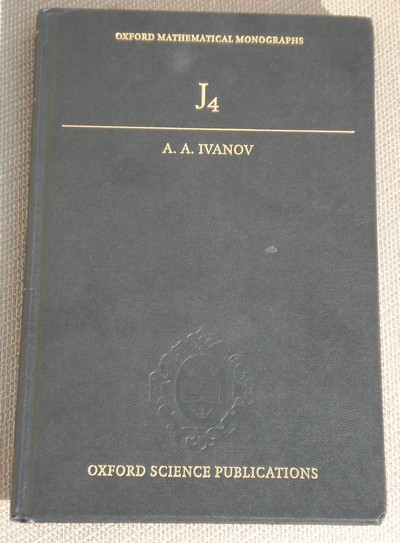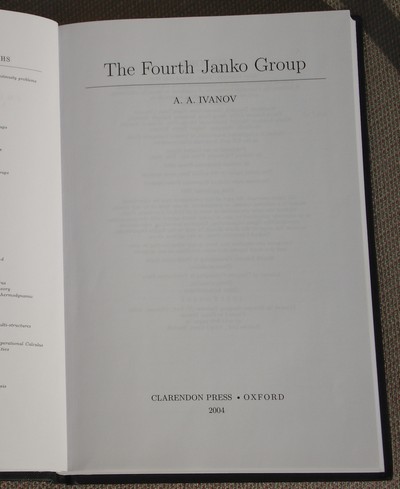 | Zvonimir Janko, professor of mathematics at the University of Heidelberg, Germany, is a well known expert in the theory of finite groups. His discovery in 1964 of the group now called the first Janko group in his honour, launched the modern theory of sporadic groups. We wish him a happy 75th birthday! And a happy 100th birthday to his father in Bjelovar, Croatia! |

| Professor Zvonimir Janko, Mathematical Institute, University of Heidelberg, Germany, at the University of Zagreb, Faculty of Electrical Engineering and Computing, November 26, 2007, at a scientific meeting organised on the occasion of his 75th birthday by his students and collaborators in Croatia . |
Classification TheoremLet us state the famous Classification Theorem for finite simple groups.
Definition of the group, with a few examples and applications. More advanced, for beginning graduates: J.S. Milne, Group Theory, 2007, 121 pp. Daniel Gorenstein, the first person to put forward a plan for classifying all the finite simple groups, started the introduction to his book "The Classification of Finite Simple Groups" with the following words:
A few pages later Gorenstein continues: It is therefore not surprising that the Classification theorem, the formulation of which is rather short, is also called enormous theorem due to its enormously long proof. Moreover, there is not a single expert capable to understand the proof of the Classification Theorem in its entirity. |
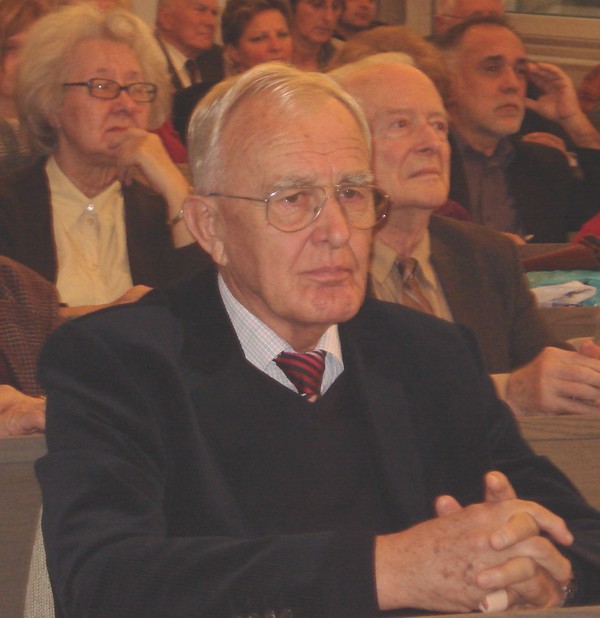
| Professor Zvonimir Janko delivered an invited lecture about his results concerning sporadic groupsat the International Congress of Mathematicians in Nice, France, in 1966. Behind him on the right is professor Vladimir Devidй, University of Zagreb, his PhD advisor. |
Janko groupsThe sporadic groups have been discovered already in the 19th century by Йmile Lйonard Mathieu (1835-1890). Mathieu goups M11 and M12 have been discovered in 1861, and M22, M23, and M24 in 1873. It took more than 90 years after the discovery of the last Mathieu group (and more than a century after the discovery of the first Mathieu group) until professor Zvonimir Janko, then a young mathematician at the age of 32, constructed a new sporadic group in 1964, now called J1 in his honour. It has 175,650 elements. The discovery of J1 in 1964 (published in 1966) was a tremendous surprise in mathematical community. It had been "received as a sensation by the specialists in group theory", see [Held, p1]. This discovery has launched a modern theory of sporadic groups. Zvonimir Janko at that time worked in Australia, at The Australian National University (his name is included within Notable past staff) in Canberra, capital of Australia. Subsequently Janko discovered three more sporadic groups:
In 1967 Higman and Sims constructed sporadic group HS. John Conway constructed three sporadic groups, Co1 and Co2 in 1968, and Co3 in 1968. Dieter Held, a student of Professor Janko from Mainz, constructed a sporadic group now called He (with G. Higman and Mc Kay), J.E. McLaughlin and Michio Suzuki constructed respective sporadic groups Mc and Su in 1968. Fischer constructed groups M(22), M(23) and M(24)' in 1969. Richard Lyons and Charles Sims constructed Ly in 1970, Rudvalis, Conway and Wales constructed Ru in 1972. The same year Michael O'Nan and Charles Sims discovered ON. In 1974 the following three sporadic groups have been discovered: F5 by John Thompson and Stephen Smith, F3 by Koichiro Harada, Simon Norton and Scmith, and F1 by Bernd Fischer and Robert Griess. The sporadic group F1 is the largest one, better known as the Monster group. It has approximately 8x1053 elements, or precisely 808,017,424,794,512,875,886,459,904,961,710,757,005,754,368,000,000,000 elements. The second largest one is F2, called the baby Monster, which has4,154,781,481,226,426,191,177,580,544,000,000 elements. The fourth largest sporadic group is J2, with order equal to 86,775,571,046,077,562,880 It should be stressed that Zvonimir Janko not only discovered the first sporadic group in the 20th century (J1 in 1964), but also the last one (J4 in 1975). So Janko somehow opened and closed the quest for all sporadic groups in the 20th century. It resulted in the discovery of altogether 21 sporadic groups in the 20th century. The fascinating quest for new sporadic groups has resulted, besides four Janko groups, in the discovery of 17 of them in the period from 1967 to 1975 (M. Suzuki, D. Held, I. Conway, I. Thompson, I. Sims, Rudvalis, R. Lyons, Harada and Bernd Fischer, who discovered the largest sporadic group, the so called Monster). In 1981 it has been proved by S. Norton, Cambridge, that there are no other sporadic groups than these 26 peculiar groups. In January 1981 M. Aschbacher declared during a solemn session of the American Academy of Sciences that all finite simple groups are known. This meant that the Classification Theorem has been proved, and Janko's contribution to its proof was enormous. However, it turned out that Aschbacher's announcement was premature, since many mistakes have been found in the studies of the so called quasi-thin groups, and this has been finally settled in 1992, see Janko's survey paper [Janko], p 179. The name of "sporadic groups" has been introduced by William Burnside in his monograph Theory of Groups of Finite Order, 1911, in which he indicated an exceptional nature of Mathieu groups: "These apparently sporadic simple groups would probably repay a closer examination than they have yet received." In this way he forsaw the avalanche of investigations which ensued only after 1964, when Janko discovered his J1. To illustrate the "earthquake" in group theory which raised Janko's discovery of J1 we cite the following testimony from [Жepuliж] (translated from Croatian by D.®.). In 1997, during the celebration of 65th birthday of professor Janko in Maniz, Bertram Huppert, the author and coauthor (with Norman Blackburn) of the most extensive, encyclopaedic treatise and manual on finite groups, Endliche gruppen I, II, III, said roughly the following: "There were a very few things that surprised me in my life. I experienced the Second World War. It could have been predicted that there will be war. I believe it will surprise you, and some of you may be shocked by what I am going to say. There were only the following two events that really surprised me: the discovery of the first Janko group and the fall of the Berlin Wall." Professor Vladimir Жepuliж from the University of Zagreb was a witness of the following interesting event in Gцttingen, which nicely illustrates the importance of this discovery. In his investigation professor Janko exploited modular characters of groups, a theory developed in 40s and 50s of the 20th century by Richard Brauer, one of the most famous mathematicians. Professor Richard Brauer, a German emigree to the USA, was a visiting professor in the academic year 1964/65 at the Mathematical Institute in Gцttingen, where I also participated as a stipendist of the Humboldt Foundation, and attended his lectures. Professor Brauer arrived to his first lecture after Christmas visible excited, carring a piece of paper in his hand and saying: "I have received this mail from Zvonimir Janko from Australia, in which he informs me that using my theory of modular characters he found a new sporadic finite simple group!" ([Жepuliж], translated form Croatian by D.®.) |
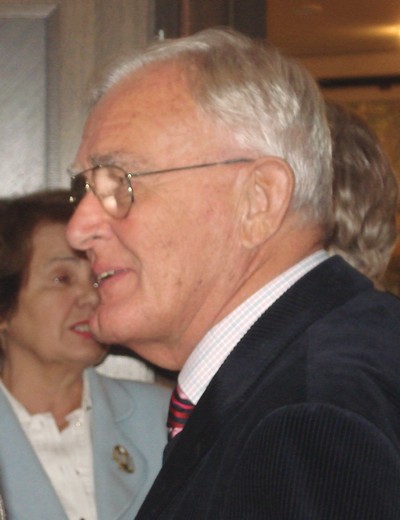
Professor Janko is an aggreable and communicative person.
Simple groups balladBelieve it or not, Janko's groups have entered a ballad! Here is A Simple Ballad dealing with simple groups, due to anonymous author, and published by the American Mathematical Monthly, Nov. 1973 (provided on the web by Hubert Grassmann).
Remark 1. Found scrawled on a library table in Eckhart Library at the U. of Chicago; author unknown or in hiding. (See W. E. Mientka, Professor Leo Moser - Reflections of a Visit, American Mathematical Monthly 79 (1972), 609-614.) Remark 2. The ballad was written before the discovery of the last sporadic group in 1975, that is, of the Janko group J4. In other words, the ballad is far from being finished. |
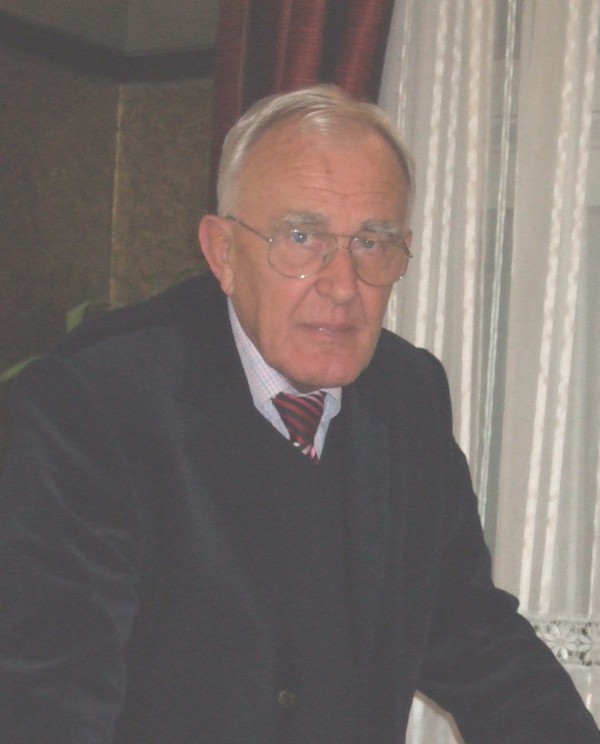
| Professor Zvonimir Janko is a corresponding member of the Croatian Academy of Sciences and Arts since 1993. He is a member of the Heidelberg Academy of Sciences since 1972. In 1970 the French Academy of Sciences decorated him with a medal for the discovery of his sporadic groups. |
A short biography of Zvonimir JankoProfessor Zvonimir Janko was born in Bjelovar, Croatia, in 1932. He studied mathematics at the University of Zagreb. After graduation he was sent to work at a high school in a small town of Li№tica (also known as ©iroki Brijeg - Wide Hill) in Bosnia and Herzegovina, where he was teaching physics. There he had already started to publish his first scientific works. It is at that time that he learned about groups, and found it interesting that only four axioms in the definition are the starting point of enormous theory. It is amusing that he was receiving letters from editorial boards indicating "University of Listica" in his address! And the highest educational institution in the town was the high school where he worked. Professor Janko's wife Zora is from Li№tica. He earned his PhD at the University of Zagreb in 1960 under (formal) supervision of professor Vladimir Devidй. The title of the thesis was Dekompozicija nekih klasa nedegeneriranih Rйdeiovih grupa na Schreierova pro№irenja (Decomposition of some classes of nondegenerate Rйdei Groups on Schreier extensions), in which he solved a problem proposed by an oustanding Hungarian mathematician Laszlo Rйdei. Professor Stanko Bilinski (PDF) was the head of the PhD exam committee. Until 1962 he alreday had about ten published journal articles, satisfying condition for the position of assistant professor of mathematics at the University of Zagreb. Despite excellent results of a young talented mathematician, Janko was not able to find an adequate job in the communist Yugoslavia. His only "fault" was his particiaption in students' visit to the grave of the 19th century Croatian politician Dr. Ante Starиeviж, for which he was draconcially punished by two years of suspension of his studies. This is why his studies were prolonged for two years, from 1950 til 1960. He applied thirteen times for the position of Research Fellow or Assistent Professor, but in vain (even in Tuzla in Bosnia and Herzgovina.) Therefore Janko decided to go to Australia, where he spent seven years, 1962-1968. He was firstf employed at the Australian National University in Canberra where he stayed until 1964, and then obtained a position of full professor at Monash University in Melbourne. He then moved to the USA, where he spent the period of 1968-1972 first as a visiting professor in Princeton, and then as a full professor at the Ohio State University in Columbus. Since 1972 until his retirement in 2000 Janko was a full professor at the University of Heidelberg, Germany. But even after his retirement his scientific activity is amazing. His work can be roughly divided into three parts:
Professor Janko is a great fan of theatre and a passionate chess player. In 2007, when he celebrated 75th birthday, his father celebrated 100th brithday singinig and playing violin. Here we reproduce a very short, but significant biographical sketch written by professor Zovnimir Janko himself, on the occasion of his very much belated admission to the Croatian Academy of Sciences and Arts in 1993. His admission was not possible ex- Yugoslavia. The biography was written in Croatian language, and published in the Notices of the Croatian Academy of Sciences (Vjesnik Hrvatske akademije znanosti i umjetnosti), see [Janko, p 180].
Professor Janko delivered a lecture at the Croatian Academy of Sciences and Arts in Croatian, entitled "Kako sam prona№ao иetiri sporadiиne grupe" (How I discovered four sporadic groups), March 24th, 1993, published with the above biographic sketch in [Janko].
Source: [©iftar] Saҫetak Zvonimir Janko (Bjelovar 1932.), znameniti je matematiиar. Osnovnu №kolu i gimnaziju pohaрao je u Bjelovaru. Studirao je matematiku u Zagrebu, gdje je diplomirao (1956.) i doktorirao (1960). Nakon diplome radio je u ©irokom Brijegu (tada Li№tica) u Bosni i Hercegovini. Razdoblje 1962. - 1968. proveo je u Australiji, najprije u Canberri (1962 - 64.), a zatim kao redoviti profesor na Monash University u Melbourneu (1965.-68.). Od 1968. do 1972. Janko je proveo u SAD kao gostujuжi profesor na sveuиili№tu Princeton a potom kao redoviti profesor na Ohio State University u Columbusu (Ohio). Od 1972. do umirovljenja (2000.) redoviti je profesor Sveuиili№ta u Heidelbergu (Njemaиka). Z. Janko je poznat po dostignuжa iz matematiиke discipline teorije konaиnih grupa. Najznaиajnija su mu otkriжa novih sporadiиnih prostih grupa, danas poznatim pod nazivom Jankove grupe. Ostavio je neizbrisiv trag i u teoriji projektivnih ravnina i dizajna. Profesor Zvonimir Janko sudjelovao je u poslijediplomskoj nastavi na Matematiиkom odjelu Prirodoslovno-matematiиkog fakulteta u Zagrebu, odrҫao je niz predavanja u Zagrebu, Splitu i Mostaru. Suradnik je i mentor mnogim hrvatskim i stranim matematiиarima. Dopisni je иlan Hrvatske akademije znanosti i umjetnosti. Tijekom rada u Heidelbergu zapaҫena je njegova pomoж Hrvatskoj u razliиitim oblicima.
|
| A.A. Ivanov: The Forth Janko Group, Oxford Mathematical Monographs, 2004, 250 pp Alexandar Antolievic Ivanov is professor of pure mathematics at Imperial College, London, trained as a mathematician in Moscow, Russia
The title of the book on the front conver is simply J4 :
And the inside title reveals to full title of Ivanov's monograph:
|
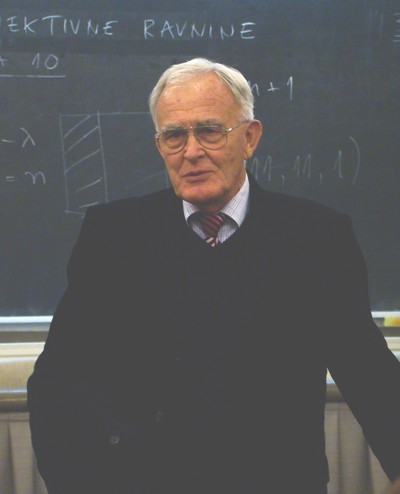
Professor Zvonimir Janko at the University of Zagreb, 2007
Collaboration with Croatian mathematiciansIn winter semester of 2000 Janko taught a postgraduate course Finite Groups Theory (30 hours) at the University of Zagreb, Department of Mathematics, PMF. In the years of 2000-2003 professor Janko delivered courses for graduate students at the Department of Mathematics, University of Zagreb, in which he introduced listeners into the field of his current research - the theory of finite p-gourps. The lectures were delivered in his characteristic way - clearly and precisely, and at the same time with a lots of humour. He taught from the very beginning, lecturing elements of group theory, till contemporary probelms of current investigations. See [Жepuliж]. He had numerous lectures in group theory and design theory, and his students work in Zagreb, Rijeka and Split (in Croatia), and in Mostar (in Bosnia and Herzegovina). He supervised many PhD theses in Croatia. Dr. Zdravka Boҫikov, University of Split, was among the first Croatian mathematicians to earn her PhD thesis (1984) under the guidance of professor Janko. Zvonimir Janko has many collaborators, not only in Croatia, so that one can speak about Janko's School, see [©iftar]. In 2007 professor Janko obtained a special recognition from two German institutions, German Rector's Conference and German Research Foundation (Deutsche Forschungsgemeinschaft, DFG), for his contribution to the development of mathematics research in South East Europe. His students are in Croatia, Bosnia and Herzegovina, and Kosovo, see [Жepuliж].
|
Math notions bearing the name of Janko
|
For a more detailed description of life and work of Zvonimir Janko see www.croatianhistory.net/etf/janko
Formated for CROWN by prof.dr. Darko ®ubriniж
Distributed by www.Croatia.org . This message is intended for Croatian Associations/Institutions and their Friends in Croatia and in the World. The opinions/articles expressed on this list do not reflect personal opinions of the moderator. If the reader of this message is not the intended recipient, please delete or destroy all copies of this communication and please, let us know!
